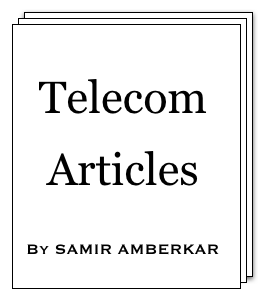Transaction Capabilities Application Part (TCAP) [Under SS7]
As we have seen in earlier articles, there is a need for switches to interact with each other for purposes other than call circuit setup. We need a layer on top of originating point-to-destination point connectivity provided by SCCP, that would help SSP/SCPs to do transactions with each other. We have already seen a pizza example wherein, SSP need to do a transaction "database query" with SCP. Another example would be callback feature.
A call B, but B is busy. Now A can request "callback on B". Once B goes on-hook, somehow this is to be informed back to A. If A and B are on one switch/SSP, it is an easy task. But if A and B are on different SSPs, somehow A's SSP need to inform to B's SSP about "A's request for callback".
TCAP itself will not implement these features, but will provide a (supporting) framework on which applications can be developed to provide these features. One popular user of TCAP is MAP (Mobile Application Part) used thoroughly in GSM networks for MSC/HLR/VLR interactions (e.g. signaling required to find the terminating mobile during call termination, location update related signaling etc.)
TCAP use connection-less services of SCCP. Note that the way TCAP has been specified in Q.771, instead of SCCP, other implementation of OSI network layer (providing required services) can be used.
TCAP has two sub-layers - transaction sublayer and component sublayer on top of it. This is evident in TCAP message structure as below. It uses ASN.1 format - it has "Tag", "Length", and "Value". "Tag" identifies the type of "Value". Length of "Value" is variable and so mentioned in "Length" field.

DHA - Dialogue Handling
CCO - Component Coordinator
CHA
- Component Handling
ISM - Invocation State Machine
TCO
- Transaction Coordinator
TSM - Transaction State Machine

TCAP message is partitioned in three portions, Transaction, Component, and Dialog.
Transaction portion takes care of identifying transaction, Component contain the actual application data, whereas optional Dialog is used to know the version of transaction and encryption information between two nodes.
In subsequent articles, we will look at these portions in bit more detail.
References: Q.700 (SS7), Q.771 (Functions of TCAP), Q.772 (Information elements of TCAP), Q.773 (TCAP message formats), Q.774 (TCAP procedures), X.690 (ASN.1), SS7 book by Russell, GSM Networks book by Heine.
© Copyright Samir Amberkar 2010
| SCCP « | SS7 Index | » TCAP - 2 |



